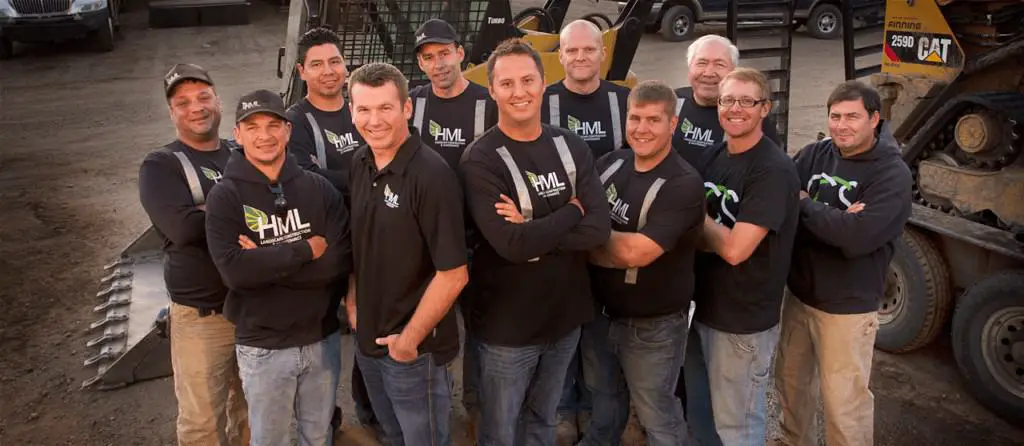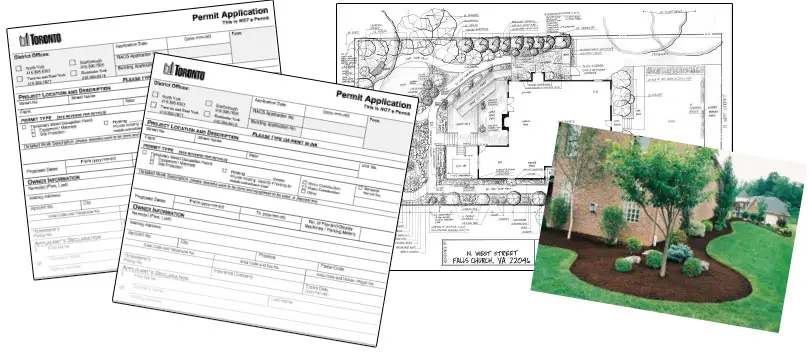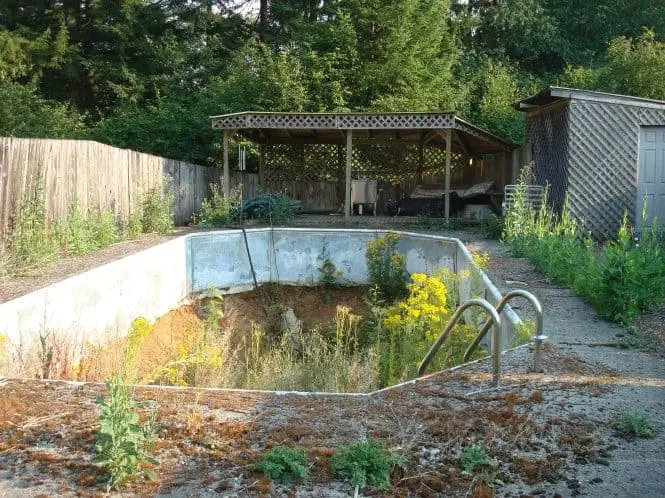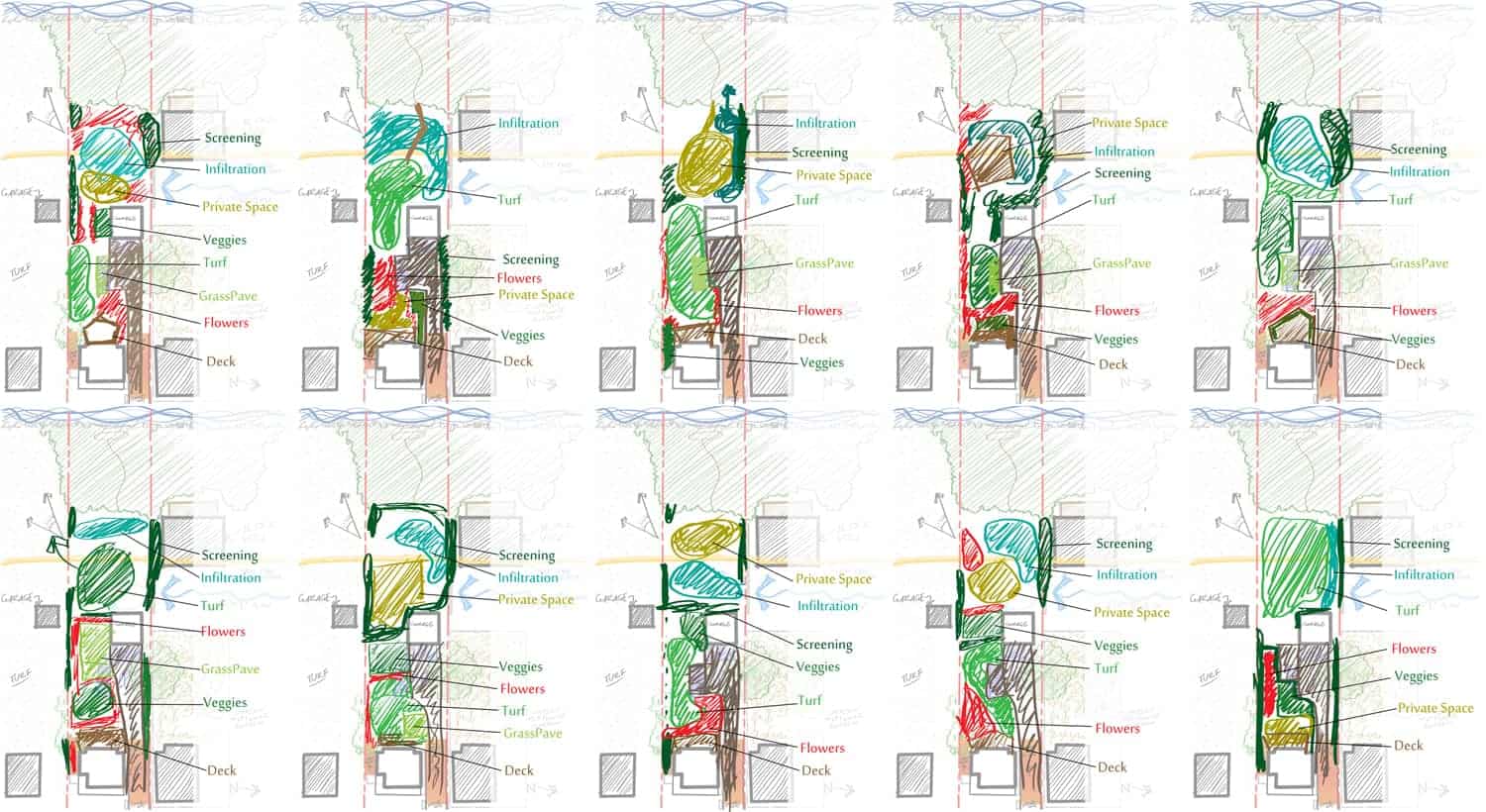This is Part 3 in a series on Using Images as Inspiration for generating your own Garden Design Ideas. In it I take a look at the design and construction process – all the decisions and, more importantly, the changes that occur along the way from conception to completion.
Part Two of the Context is Everything! series looked at the Clients – the people behind the photos. This post follows on, looking at the changes during the design and construction process.
Understanding the nature of this process is incredibly important. It gives you an insight into how things changed over time, and WHY they changed.
It is common for larger, more elaborate projects to require designers and builders. Since they have a stake in an aesthetically pleasing outcome, they will adapt and change throughout the build. For anyone who has never been through a build or design process, it can be EXHAUSTING.
Like many relationships, they can be good or, sometimes, bad. Especially so when clients feel left out of the loop in design or construction decisions.
Ironically, builds generally proceed smoothest when the clients know as little as possible.
This is an important aspect to consider when looking at a single image for a number of reasons, outlined below.
How Many Design Iterations?
An iteration is simply a version of a design.
In good design, you have a draft version, test how it works, and create a new version where you are responding to something in order to make it better.
In most garden designs, the designer creates a few options to choose from, the clients chooses, and they take it from there.
There is generally a cap on how many iterations you can have, with additional costs per change beyond that. So if the client wants to change the design, the designer will create another iteration.
Whenever a client wants to change something, the designer creates another iteration. As you can imagine, the more iterations, the more expensive things get.
Generally designs change even once they get into construction, as new information and constraints raise their heads.
The reason it is important to know if their were major changes throughout the design process is that changes are a response to something. Due to either a client changing their opinion on something, or a constraint that became apparent during the process.
So if all you see is the finished product without the workings that underpin it, you have no idea how much work was involved in getting it to that finished state. It may be a lot more than you bargained for.
For a great look at quick design iterations, check out this great little sequence by Vrank92 at IGN.com (somewhere I did not expect to find landscape design content).
It is quick, messy and explores a lot of different ideas. Therefore it expands options rather than diminishes them.

Budget To Work With (For Design AND Construction)
Outlined in the clients section, what it refers to here is how much wiggle room the clients had to work with.
Most projects go over budget, and some clients have the ability to handle it, while others don’t.
This causes issues if you’re trying to copy a design from some unknown location directly to your backyard. When you’re already at your budget limit, you will have no way to deal with any problems that arise.

Size Of Team Involved In Construction (Or Even Design!)
For all you know, a 20 man team finished construction in 4 weeks. Or, it may have been one man, slowly working on the project until its completion.
One is clearly much more expensive than the other. And also requires much more logistical and supply management.
While you may desire that beautiful dry stacked retaining wall, consider the (often unexpected) costs of construction.
Finishing in a shorter time frame is unusual – unless you have deep pockets and a big team. So adjust your expectations accordingly.

Image from hmlconstruction.ca.
Any Council Requirements, Or Issues With Construction Or Design
This works two ways.
First – if the clients had any difficulties with their council.
Second – if YOU might have problems attempting a similar design.
Council restrictions and organising permits can be the bane of many projects. Often they have a big influence on how smoothly and quickly a project runs. Even the final outcome will be heavily influenced by councils.
Be prepared for changes – unless you are aware of what council permitted that construction in the image. Depending on how flexible or rigid the council is, you run the risk of your project being rejected completely– or paying big fees for permit applications.

Changes During Construction
One rule of every build – sh*t happens and things have to change.
Problems will appear when excavation is involved. It’s difficult to quote costs and finalise timelines when you don’t know what you’ll find until you start digging.
Simply looking at a photo gives you no indication of any difficulties throughout the construction process. What looks smooth and calm on the surface may belie a turbulent and dangerous undercurrent.
Unseen Problems And Solutions (Both Physical And Cost)
Continuing the previous point, the image won’t indicate any extra changes or decisions.
Therefore you won’t see delays, or if it went over budget.
You won’t know if there were any other issues that came up during the design and construction process. All you see is the finished product, with none of the complications, compromises or alterations that may have taken place.

The Rest Of The Garden/ Design (Including Orientation And Slope)
Unless you have a video, or a series of images from the project, it can be very difficult to see how this view fits into the rest of the garden.
One of the biggest problems people run into when trying to design their own garden from individual pieces is they focus on one section, rather than considering how it will fit into an overall scheme or plan.
It’s easy to do that when all someone does is copy and paste completely different styles, ideas, designs, tips or tricks in random positions all over the garden. That’s how you end up with half finished, abandoned projects around a garden – using single pieces from different puzzles.
So when you look at that must have vista, think about what you’re missing just out of frame, and if there is more to the picture than you are seeing.

Material Options And Availability (Including Cost, Supply And Legality)
It’s really easy to be seduced by a beautiful weathered deck, smooth paving area or luscious lawn or garden bed, but what many people don’t consider is the cost and availability of using these materials in their backyard.
Besides even a basic understanding of cost (trade or retail?) there is also the issue of whether it is easy to supply, available at different times of the year.
Not to mention how long does it take from order to delivery and is it even possible to source through a retail supplier (many wholesale suppliers don’t deal with the public, requiring a trade partner to help out, or some out of the box thinking)?
Besides those considerations, are those materials (particularly plant varieties) even legal in your area? Are they considered weeds by the local council and therefore sink your plans before you’ve even begun?
This ties back to the first step in this series – considering site and climate.

It’s A Stop-Start Process
As you can see, the process of getting a design from a clients (or more likely a designers) head onto paper has many steps.
Starting in a brain (or brains), it goes onto (draft) paper. Then into a computer where it is altered again.
Following many iterations it will be printed and sent to third parties. Engineers, drafters and planners will alter it again. Not to mention the council will add in their two cents.
Once you have design approval you will need to tender, analyse and contract a builder. From there you need to be aware of supply timelines, excavation and sub-contractors.
And that ignores the certain changes you will make during the build. You will determine how to cover mistakes, fixes, clean ups and disagreements… finally, at the end you have (sort of) a backyard garden (hopefully) similar to your original design.
If all you’re seeing, and all you’re basing your decisions on, is the final, freshly washed and scrubbed landscape, idea, tip or trick, then you are missing a hugely important part of the story, one that had a major influence on and dramatically informed the final outcome.
For many things in life you don’t care about the process – all you want is the finished product.
But your own personal garden or backyard is NOT one of them.
Take Action: WRITE DOWN ANSWERS TO THESE QUESTIONS
WHAT WOULD YOU BUDGET FOR THE DESIGN IN THAT IMAGE?
HOW LONG WOULD YOU BE WILLING TO BUILD FOR?
ARE YOU FLEXIBLE WITH THE LAYOUT AND MATERIALS?
CAN YOU BE PATIENT WHEN THINGS GO WRONG?
The more flexibility you are comfortable with, the easier it will be to work that idea into your garden.
We’ll explore ‘the Image Itself’ in the next post. Specifically how reworking and manipulating images leads to more clicks (but less ‘truth’).

